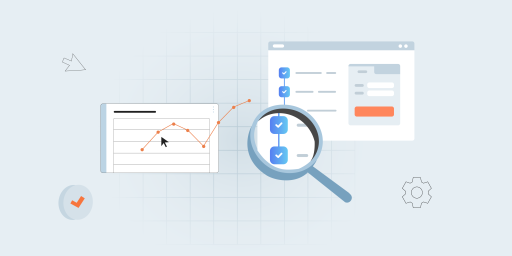Regression testing is probably the least enjoyable process in the job of every software testing engineer. The unfortunate fact is however that regression testing usually takes about 80% of a tester’s daily workload. There may be many different ways of how engineers cope with this daily routine, and yet, sooner or later, the process can still become a monotonous, boring undertaking. This results in situations when a tester’s eye is not so keen anymore. They lose interest and tunnelvision through the process, which leads to deterioration in the quality of their job.
So how do testers deal with such an unpleasant routine? How do they prevent such adverse effects of daily regression testing and keep the process interesting?
In this post, I want to share with you a few tips the software testing teams at TestFort use to enjoy performing regression testing and tricks that save our workdays from becoming a tedious, draining routine.
First and foremost, let’s remember that Regression testing is the kind of testing that is carried out based on the already existing checklists and test cases. Such documentation is typically created through either special tools such as TestRail, plugins for Jira, etc., or simply in Google Sheets. We at TestFort, for instance, use a hybrid system to create and manage testing documentation. What this means is that a part of our test cases is created in Jira using the Xray plugin that we also use to conduct regression testing while the rest of the cases we create in Google Sheets and conduct the testing following these checklists.
When carrying out regression testing using the Xray plugin for Jira, we don’t even have the time to think about getting bored as the plugin enables us to easily organize the tests into large, convenient Test Sets where the relevant test cases are constantly updated.
But regardless of the tools you use, there’s another side to how you can keep your regression testing most effective and ensure top quality of the results. Let’s have a closer look at how to properly organize your work with checklists:
- Conduct periodic checklist updates.
- Change the test environment.
- Enhance Regression testing with Exploratory testing.
- Engage fresh blood on the project.
Conduct periodic checklist updates
For the daily regression testing we carry out on most modules, we use low-level checklists, the checklists that were created almost a year ago based on the requirements and mockups. However, as the requirements change and the software is added with new features, we constantly update these checklists throughout the development process. What this means for the regression testing routine is that we can take periodic breaks from it by switching to updating our documentation. This doesn’t only stop regression testing from becoming a daunting routine, but enables us to expand and modify some checks in order to avoid the pesticide paradox.
Change the test environment
Conducting daily tests in the same test environment can sometimes become a pretty tedious responsibility that is fraught with lack of enthusiasm and tunnel vision. To prevent your quality assurance team from losing focus, you should always take the opportunity to periodically change the environment and test on different platforms, browsers, and devices. For example, today you carry out regression testing on the Windows platform in the Google Chrome browser, next day you test on an iPhone, and the day after you work on the Mac.
This approach will help you more effectively catch the bugs that are specific to particular platforms, browsers, and devices. In addition, your testers don’t get bored during the testing process as they are learning the technical aspects of a particular test environment at the same time.
Preventing defects requires testing at early stages
Enhance Regression testing with Exploratory testing
If you run the very same checks every day from the very same checklist you already know by heart, why not use the opportunity to expand your horizons with some exploratory testing? To enliven the regression testing process, make it more interesting and productive, our team usually throws Dr. James A. Whittaker’s Exploratory Testing Tours into the mix. Such an approach will not only spice things up a little bit but help your team go beyond the scope of the checklist and have a look at these test cases from a different angle.
Sometimes such actions help us improve the long-written test cases and effectively find inconsistencies with the expected results in both the checklists and the software you’re testing. By adding exploratory testing to your regression testing routine, you save your testing team from getting stuck in the tedious loop of the very same, long-written daily checks.
Engage fresh blood on the project
At TestFort, we have new employees joining our projects for training from time to time. They learn the specifics of the tested product, the technologies we use on the project, and our workflows. This is a great opportunity for us to involve them in the regression testing process. These new employees see the checklists and the product we’re testing for the first time. They also ask a lot of questions. And this is great for the project! Helping your new testers find the answers provides you with a unique opportunity to find errors and inconsistencies you could’ve missed in your checklists due to tedious repetition in the course of a long-term project.
Newly hired employees can help you identify an outdated test on the checklist. Like, for example, when the functionality was updated but the test remained the same. They can also help you identify the test cases that are overly complicated—the ones that raise too many clarifying questions and could use some simplification. Last but not least, new engineers on the project may discover additional scenarios during testing, providing you with important information to be added to your checklist. The same applies to detecting bugs that were not found using the existing test cases.
The above may not be an exhaustive list of approaches you could use to maintain your regression testing routine at its top effectiveness, but these simple tricks sure do work miracles for our software testing teams. Whether it’s testing or maintaining documentation, software testing engineers always follow the rules, methodologies, and logic that ensures highest quality results. But it doesn’t mean you can’t get creative with your processes to liven up their tedious routine.
Jump to section
Hand over your project to the pros.
Let’s talk about how we can give your project the push it needs to succeed!




